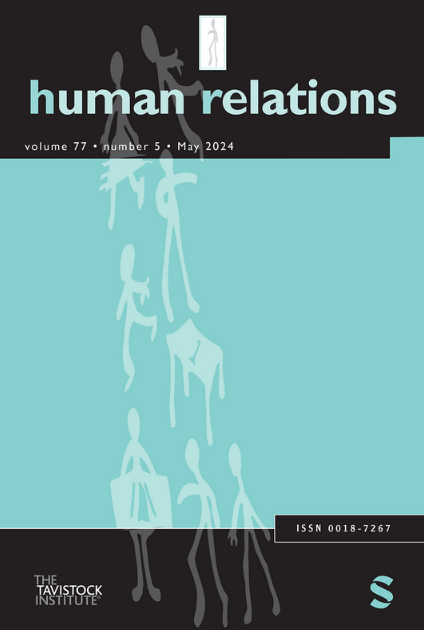进入劳动力市场时的非标准就业和就业不足及其对日后工资轨迹的影响
IF 5.4
2区 管理学
Q1 MANAGEMENT
引用次数: 0
摘要
利用澳大利亚家庭、收入和劳动力动态调查(HILDA)(2001-2020 年)的数据,我们研究了职业生涯早期的非标准就业和就业不足的综合模式如何影响日后的工资轨迹,并仔细关注了澳大利亚年轻男性(470 人)和女性(497 人)代表性样本的性别差异。通过结合多渠道序列分析和随机效应面板模型,我们得出了三个核心结论。首先,我们发现了七种不同的早期就业轨迹,其中 "标准 "职业生涯最为普遍,其特点是在受教育后的前 5 年中从事稳定、全职的长期工作。其次,我们发现在早期职业生涯中,非标准就业和就业不足的综合模式与显著的工资惩罚相关。然而,这些工资损失在 10 年内会逐渐减少。第三,只有在职业生涯早期主要失业或不活跃的青年中,才会发现持久且不断扩大的工资差距。这些惩罚在男性中尤为明显,突出了 "理想 "工人标准的影响。总之,将就业不足的求职者纳入劳动力队伍并解决基于性别的偏见应成为政策制定者的优先事项,以确保劳动力市场上所有劳动者的平等机会和公平待遇。本文章由计算机程序翻译,如有差异,请以英文原文为准。
Non-standard employment and underemployment at labor market entry and their impact on later wage trajectories
Using data from the Australian Household, Income, and Labour Dynamics in Australia (HILDA) Survey (2001–2020), we examine how combined patterns of non-standard employment and underemployment in the early career shape later wage trajectories, paying careful attention to gender differences on a representative sample of Australian young men ( N = 470) and women ( N = 497). By combining multichannel sequence analysis and random effects panel models, we make three central findings. First, we identify seven distinct early employment trajectories, with the “standard” career, characterized by stable, full-time permanent jobs in the first 5 years post-education, being the most prevalent. Second, we find that combined patterns of non-standard employment and underemployment during early careers are associated with significant wage penalties. However, these wage penalties diminish within 10 years. Third, enduring and widening wage disparities are found only among youth primarily unemployed or inactive early in their careers. These penalties are particularly pronounced among men, underscoring the influence of the “ideal” worker norm. Overall, integrating underemployed jobseekers into the workforce and addressing gender-based biases should be a priority for policymakers to ensure equal opportunities and fair treatment for all workers in the labor market.
求助全文
通过发布文献求助,成功后即可免费获取论文全文。
去求助
来源期刊

Human Relations
Multiple-
CiteScore
12.60
自引率
7.00%
发文量
82
期刊介绍:
Human Relations is an international peer reviewed journal, which publishes the highest quality original research to advance our understanding of social relationships at and around work through theoretical development and empirical investigation. Scope Human Relations seeks high quality research papers that extend our knowledge of social relationships at work and organizational forms, practices and processes that affect the nature, structure and conditions of work and work organizations. Human Relations welcomes manuscripts that seek to cross disciplinary boundaries in order to develop new perspectives and insights into social relationships and relationships between people and organizations. Human Relations encourages strong empirical contributions that develop and extend theory as well as more conceptual papers that integrate, critique and expand existing theory. Human Relations welcomes critical reviews and essays: - Critical reviews advance a field through new theory, new methods, a novel synthesis of extant evidence, or a combination of two or three of these elements. Reviews that identify new research questions and that make links between management and organizations and the wider social sciences are particularly welcome. Surveys or overviews of a field are unlikely to meet these criteria. - Critical essays address contemporary scholarly issues and debates within the journal''s scope. They are more controversial than conventional papers or reviews, and can be shorter. They argue a point of view, but must meet standards of academic rigour. Anyone with an idea for a critical essay is particularly encouraged to discuss it at an early stage with the Editor-in-Chief. Human Relations encourages research that relates social theory to social practice and translates knowledge about human relations into prospects for social action and policy-making that aims to improve working lives.
 求助内容:
求助内容: 应助结果提醒方式:
应助结果提醒方式:


